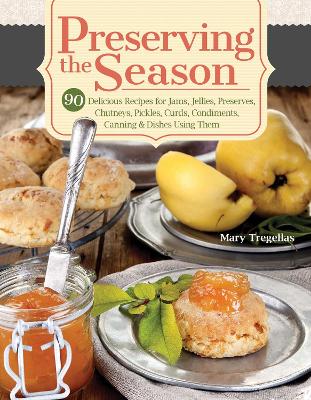Reviewed by annieb123 on
Preserving the Season is a recipe and tutorial collection to creating and using jams, jellies, chutneys, preserves, foraged foods, and more. Due out 1st Sept 2020 from Fox Chapel, it's 192 pages and will be available in paperback format.
This is a really comprehensive collection to both preserving foods as well as using them. The layout is easy to understand, not overcomplicated, and accessible. The introductory chapters cover tools, supplies, seasonal preserves, equipment, ingredients selection, and general tips on preserving.
The recipes are arranged roughly thematically. The chapter for berry preserves, also includes a number of allied recipes which use or feature the berry preserves. There's a lovely recipe for Devonshire cream tea featuring berry preserves (strawberry for preference) clotted cream, fresh scones, and proper tea. Thematically, the book has a very English feel. There are curds and chutneys, tarts and puddings, and preserves (greengage) which aren't very well known in most of the USA. That being said, these quintessentially British staples are arranged cheek-by-jowl with schnitzel and kaiserschmarren.
The recipes each contain an introduction, ingredients listed bullet style in a sidebar, and step by step instructions. Measurements are given in American standard, with metric in parentheses (yay!). The ingredients are mostly relatively easily sourced, but some might require mail order or access to canning supplies and tools.
The book is not lavishly illustrated, but the included photography is clear and easy to follow and sufficient. If the book has a flaw, it's that (to me) it felt like it tried to be too much. It's not just a collection of preserving tips and recipes, but also tries to include recipes to use those items, as well as a little bit on foraging/wildcrafting, and some bread recipes tossed in for good measure.
Five stars. This book would make a superlative selection for smallholders, orchardists, gardeners, local food fans, adventuresome cooks, and other lifestyle readers. This is a well written, eminently reasonable, usable guide to making and enjoying the excess produce of our gardens.
Disclosure: I received an ARC at no cost from the author/publisher for review purposes.
Reading updates
- Started reading
- 2 August, 2020: Finished reading
- 2 August, 2020: Reviewed
